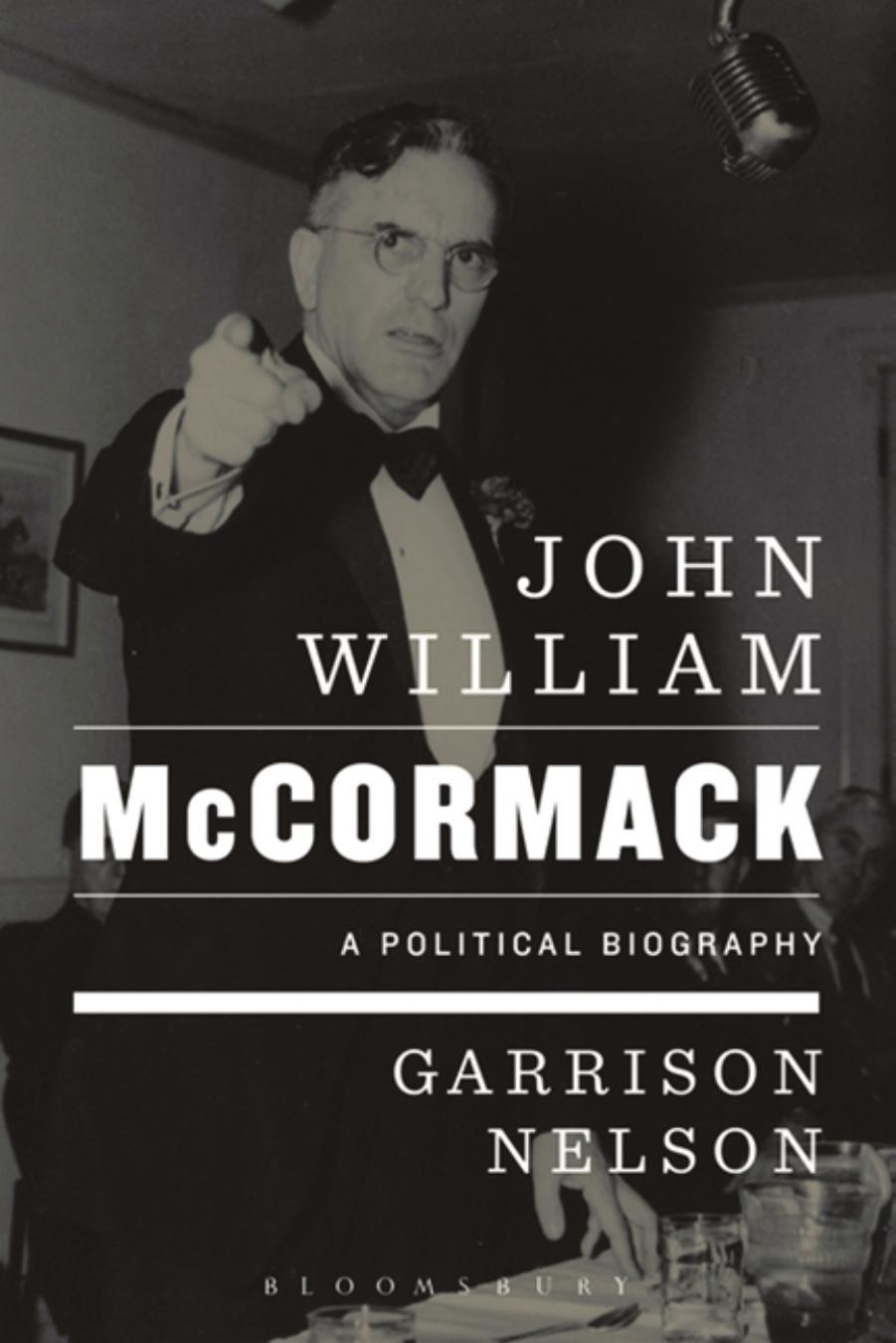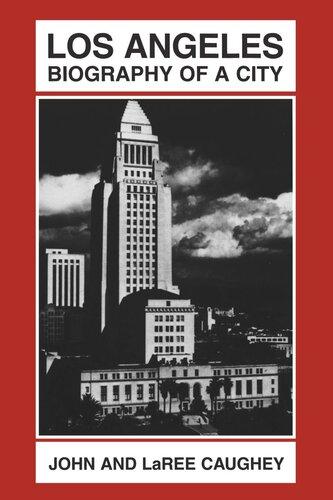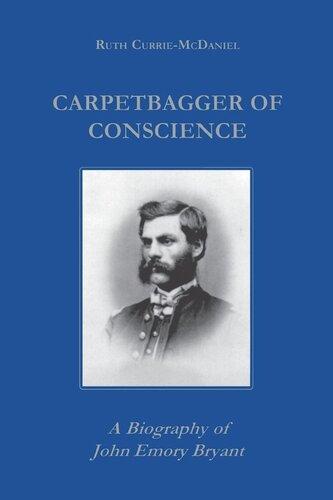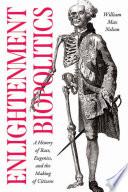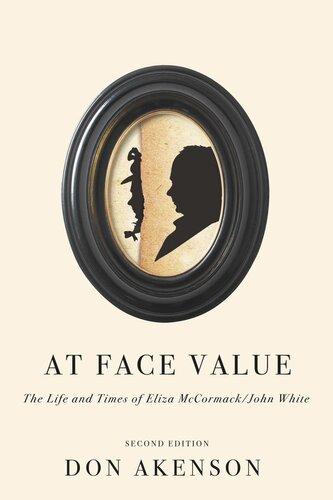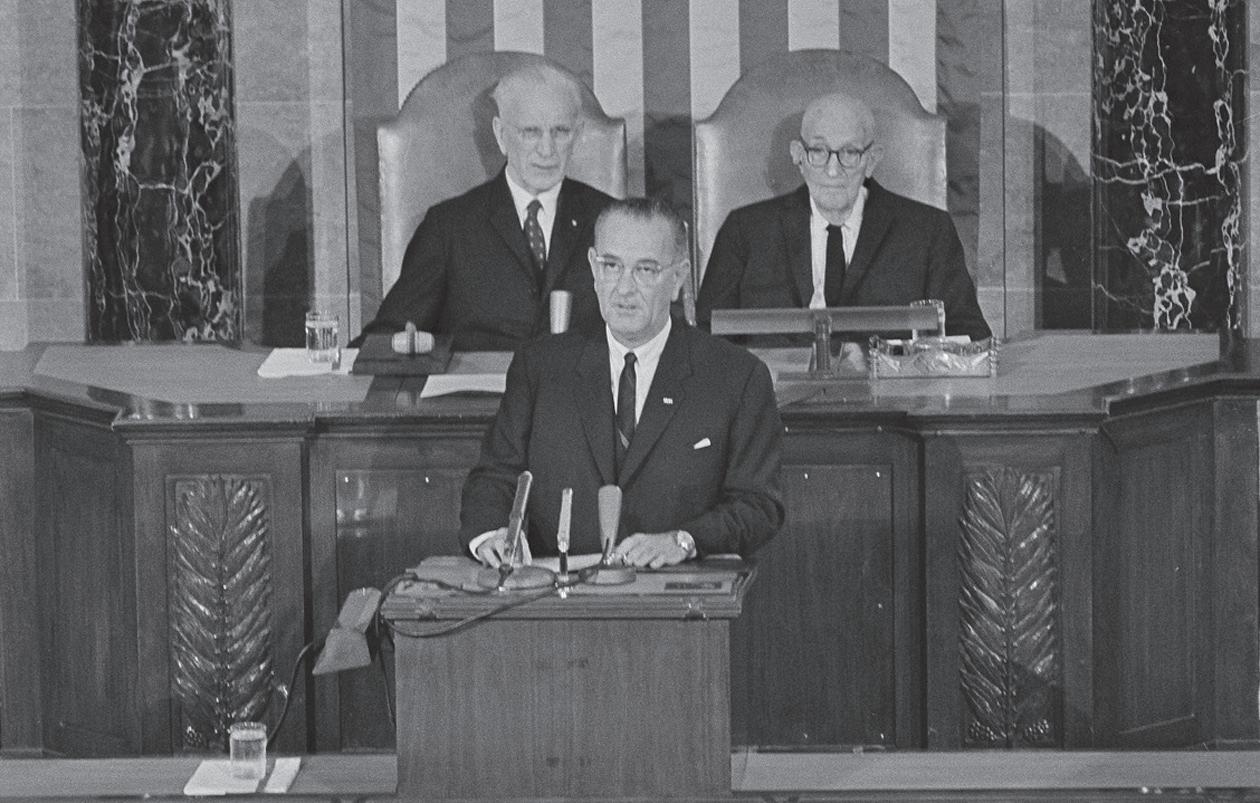List of Photographs
Cover: John William McCormack (Gotlieb Archival Research Center, Boston University)
Figure 1.1 President Lyndon Johnson’s First Address to Congress on November 27, 1963 with U.S. House Speaker John McCormack and Senate President pro tem Carl Hayden (U.S. House Historian’s Office)
2
Figure 2.1 The Gatekeepers of Irish Boston (Wikipedia.com portraits) 33
Figure 4.1 John W. McCormack: A Delegate to the 1917–19 Constitutional Convention (Gerry Burke Family Photographs)
96
Figure 4.2 The Marriage of John W. McCormack and M. Harriet Joyce, 1920 (Edward J. McCormack, Jr. Family Papers) 106
Figure 5.1 The Hon. John W. McCormack: The Logical candidate for Congress, 1928 (Gotlieb Archival Research Center, Boston University) 135
Figure 7.1 Newly inaugurated President Franklin D. Roosevelt meets with young U.S. Representatives, 1933 (Boston University, Gotlieb Archives) 179
Figure 7.2 McCormack-Dickstein House Select Committee to investigate Nazi Propaganda 1934, Samuel Dickstein, Ulysses S. Guyer, John McCormack, and Charles Kramer (Bettman, McCormack-Dickstein Committee, Photograph. Getty Images, Bettman Collection) 187
Figure 9.1 John and Harriet return to Boston after his 1940 election as House Majority Floor Leader (Edward J. McCormack, Jr. Family Papers) 254
Figure 9.2 McCormack and Rayburn confer, 1941 (House Historian’s Office) 272
Figure 10.1 FDR signs Declaration of War against Japan, Sam Rayburn and John McCormack in the background (F.D. Roosevelt Library and Museum)
Figure 10.2 FDR meets with congressional leaders to discuss Tehran meeting with British Prime Minister Churchill and Soviet
282
Premier Stalin, December 1943 (F.D. Roosevelt Library and Museum) 297
Figure 10.3 U.S. Senator Harry Truman (Dem-Mo.) and House Majority Leader John McCormack discussing the 1944 Democratic vice presidential nomination (Truman Presidential Library and Museum)
308
Figure 11.1 Vice President Harry Truman sworn in as president, April 12, 1945, with the Cabinet arrayed on the left and House Leaders on the right (Truman Presidential Library and Museum) 324
Figure 12.1 Newly released from prison, Mayor James Michael Curley rides triumphantly through Boston with Edward J. (Knocko) McCormack, 1947 (Boston Globe).
369
Figure 13.1 President Truman presenting the medal for merit to Special Assistant David K. Niles, 1947 (Truman Presidential Library and Museum) 388
Figure 13.2 President Harry Truman with U.S. Representative John McCormack and U.S. Senator Carl Hayden, Inaugural Parade, January 20, 1949 (Truman Presidential Library and Museum) 402
Figure 14.1 U.S. Representative William L. Dawson (Dem-Ill.) (Wikimedia) 415
Figure 14.2 U.S. Representative William Colmer (Dem-Miss.) (Wikimedia) 417
Figure 14.3 President Truman with Senate Majority Leader Ernest McFarland (Dem-Ariz.), Senate Democratic Whip Lyndon Johnson (Dem-Tex.), House Democratic Whip J. Percy Priest (Dem-Ky.), and House Majority Leader John W. McCormack (Dem-Mass.), 1951 (Truman Presidential Library and Museum) 436
Figure 17.1 Resolutions Committee, Democratic National Convention, Chicago, 1956, r-l: Chair John McCormack (Mass.), William L. Dawson (ill.), and unidentified (House Historian’s Office) 520
Figure 18.1 An ailing Sam Rayburn leaves a meeting with President Kennedy and the congressional leadership with John McCormack (back row) (JF Kennedy Library) 586
Figure 19.1 U.S. House Democratic Leaders: Majority Whip T. Hale Boggs, Floor Leader Carl Albert, and Speaker John McCormack (Carl Albert Congressional Research Center, University of Oklahoma) 607
Figure 19.2 U.S. Senate primary debate between Edward M. Kennedy and Attorney General Edward J. McCormack, Jr., September 1962 (Getty Images) 619
Figure 19.3 Post-primary meeting; President John Kennedy and U.S. House Speaker John McCormack, September 1962 (J.F. Kennedy Library and Museum) 620
Figure 19.4 President Kennedy, Vice President Johnson, and the Congressional Leadership. Senate Majority Leader Mike Mansfield, Senate Majority Whip Hubert Humphrey, House Majority Whip Hale Boggs, House Majority Leader Carl Albert, Vice President Johnson, and House Speaker John McCormack, September 25, 1962 (JFK Presidential Library). 625
Figure 21.1 LBJ aide Larry O’Brien with House leadership, 1964 (Carl Albert Congressional Research Center) 664
Figure 21.2 President Johnson signs the Civil Rights Act of 1964 into law (Lyndon B. Johnson Library and Museum) 671
Figure 21.3 Congressional leaders at the White House, July 27, 1965 (Lyndon B. Johnson Library and Museum) 687
Figure 22.1 Herblock cartoon critical of McCormack (Herblock Foundation) 720
Figure 22.2 McCormack and Johnson in the Cabinet Room, April 3, 1968 (Lyndon B. Johnson Library and Museum) 724
Figure 23.1 Speaker John McCormack with U.S. Representative Morris Udall (Dem-Ariz.) (The University of Arizona Libraries Digital Collections) 741
Figure 23.2 John McCormack announces his retirement, May 20, 1970 (Carl Albert Congressional Research Center, University of Oklahoma) 754
Figure E.1 Austin-Boston continues: John McCormack returns to the House with Speaker Carl Albert and Majority Leader Thomas P. O’Neill in 1973 (Carl Albert Congressional Research Center, University of Oklahoma) 775
Figure E.2 Ideological Difference Between House Party Leaders, 1899–2000 779
Acknowledgments
In 1968, I left graduate school at the University of Iowa and was hired by the University of Vermont (UVM) shortly after the birth of my daughter, Shyla. UVM has been my academic home for close to five decades. In September that year, I attended my first national meeting of the American Political Science Association in Washington, DC. On Friday of the Labor Day weekend, I went to the U.S. Capitol in hopes of arranging meetings with congressional leaders who were the subjects of my doctoral dissertation. In a surprisingly fortuitous circumstance, Speaker of the U.S. House John W. McCormack was not only in his office but I was granted an hour-long meeting with him. As we sat in his office, I rattled off the names of prominent members with whom he served—Cactus Jack Garner, Will Bankhead, Sam Rayburn, and Billy Connery from my hometown of Lynn, Massachusetts, who had been McCormack’s closest friend in the state delegation. He was delighted to be asked about these people and as he reminisced, he offered me a cigar. It was a wonderful hour for this 26-year-old new college instructor to enjoy a good smoke with the 76-year-old House Speaker in the U.S. Capitol. This remarkable experience was the inspiration for this particular book as well as for most of my published research on the U.S. Congress.
This book is the first ever full-length biography of John W. McCormack, 1891–1980, who at the time of his death weeks from his 89th birthday was then the second longestlived Speaker of the U.S. House of Representatives. McCormack was one of the very few political leaders who openly resisted a biography written about him even going so far as to repeatedly warn his office staff about preparing a manuscript of their service with him. As Dr. Martin Sweig, his longtime assistant once contended to me, “John McCormack was the most secretive man I ever met.” Consequently, the search for sources documenting his life and political career had to go well beyond his apparently sanitized congressional papers located at Boston University’s Howard Gotlieb Archival Research Center. Also presenting a problem was trying to interview McCormack’s key constituents, the South Boston Irish, who honored the code most succinctly stated by Martin Lomasney, the political boss of Boston’s polyglot West End: “Never write what you can speak; never speak what you can nod.” During the many months that I lived in South Boston and on my frequent trips to that unique peninsula as well as the Prince Edward Island birthplace of John’s Canadian Scottish father, I learned many McCormack family stories whose sources refused to let me name them in print. Most of the stories were benign but they were too good to leave out of the book and so they are included in spite of many not being fully fact-checked. Without sounding too ominous, there is no one more wholly disdained among the Irish than the informer.
The two people who most encouraged my work on John McCormack were Edward J. “Eddie” McCormack, Jr., the Speaker’s nephew and onetime attorney general of
Massachusetts, and Dr. Howard Gotlieb, the founder-director of Boston University’s renowned Gotlieb Archival Research Center, where John McCormack’s Papers were stored. Howard was a friend of my father’s and was delighted that I had chosen to write about McCormack. Howard’s staff associates Charles Niles, Vita Paladino, and Sean Noel were unstintingly supportive of my efforts to wade through the thousands of McCormack documents in their collection. Also, Eddie McCormack gave me six boxes of material—family photographs, personal letters, news clippings, and gavels— that were not included in the BU files. It was there I found documents and letters that unlocked John McCormack’s hidden past. It was the successful reinvention of his family history that made it possible for John to escape the twin cruelties of abject childhood poverty and deadly disease that shortened the lives of five siblings and his beloved mother enabling him to ascend politically to the Speakership of the U.S. House just one heartbeat away from the presidency between November 1963 and January 1965.
Two other researchers whose prior work has been invaluable were Dr. Lester Gordon, whose BU dissertation John McCormack and the Roosevelt Era was distilled from hours of taped interviews with McCormack, and Mr. Paul Wright of the University of Massachusetts-Boston, whose copious notes and interviews with McCormack relatives and South Boston associates provided much context for this narrative. Close McCormack friends Mr. Bill McSweeny and his wife Dorothy also interviewed John and their tapes are at the Gotlieb Center. Eileen Hanerfeld Crosby ably prepared the transcripts from the Lester Gordon and McSweeny tapes. John was both very voluble and concealing in his interviews. He could talk at length about a topic yet reveal very little about it. Noticing this tendency was none other than his favorite protégé Thomas P. “ Tip” O’Neill, Jr. who described John as “a windbag” after their initial meeting. John mentored Tip’s career and was pleased when Tip joined the House leadership in 1971 upon John’s retirement and eventually became House Majority Leader, 1973–77, and Speaker, 1977–87. John McCormack’s unique self-effacing personality allowed him to hide “in plain sight,” avoiding public scrutiny as he attended to the nation’s business.
In the course of researching the book, I was aided by the highly competent staffs of four Presidential Libraries and Museums: the Franklin D. Roosevelt Library in Hyde Park, NY; the Harry S. Truman Library in Independence, Missouri; the John F. Kennedy Library in Dorchester, Massachusetts; and the Lyndon B. Johnson Library in Austin, Texas. Congressional libraries that were especially valuable were the Carl Albert Congressional Research Center at the University of Oklahoma in Norman, Oklahoma, and the Richard W. Bolling Papers at the University of Missouri-Kansas City. I also visited the Joseph W. Martin Papers at Stonehill College in Easton, Massachusetts, and Tip O’Neill’s Papers at Boston College. Knowledgeable archivists are the salvation of a biographer without whose assistance any researcher would drown in the enormity of the papers contained in these collections. Three in particular deserve special mention, Bob Clark at the Roosevelt Library, Steven Plotkin at the Kennedy Library, and Carolyn G. Hanneman at the Albert Center. The able staffs of the U.S. Senate Historical Office, the U.S. House Historical Office, as well as longtime friends at the Congressional Research Service of the Library of Congress helped fill in missing details about a man whose congressional career spanned 42 years. Special mention should be made of
Mr. Waldron Leard of Joe McCormack’s hometown of Souris, PEI, whose encyclopedic knowledge of Canada’s smallest province was invaluable to my understanding of the unique relationship between the Canadian Maritimes and New England.
I learned of the importance of mentorship as an undergraduate at Boston University where I was mentored by Professor Murray B. Levin and in graduate school at the University of Iowa by Professors Sam Patterson and John C. Wahlke. It is a central tenet of a successful life as well as an academic career. My research was facilitated by an extraordinary cadre of UVM undergraduate mentees. Among them, I would list Alana Chain, Brad Carlson, and Heather Purdie, who provided assistance at critical points in the research. Seven students in particular stand out: Maggie Taylor Steakley, who mined the Kennedy Library for thousands of pages of oral history documents; Alexandra Gero, who photocopied thousands of pages of the Congressional Record in search of relevant John McCormack remarks; Jade Harberg, whose careful reading of documents could find the most illuminating quotes; Lindsey Nelson, who created the photo record of McCormack’s life and career that has been invaluable in public presentations of this research; Liz Kane, whose organizational skills produced order from the disorder of multiple hundreds of file folders of 20-plus years of research; and Katie Alexander, who read through thousands of pages of newspaper accounts to provide the contemporaneous scaffolding for the book’s narrative. This past year, the book was completed thanks to the determination of Sophie Scharlin-Pettee, who oversaw the book’s final rewrite with clarity and insight, and Brenna Marie Rosen, who helped tighten the final editing and prepared the book’s mammoth bibliography. The wonderful intelligence and good humor of Sophie and Brenna were essential to the completion of the manuscript as I tried to juggle my multiple responsibilities of classroom instruction and political commentary.
While I funded most of the book personally, I was aided by timely grants from the Earhart Foundation in Michigan, the Carl Albert Center at the University of Oklahoma, and the John F. Kennedy Library and Museum. The most recent source of funding came this past year from the generous endowment of UVM alumnus Elliott A. Brown, whose memories of the wonderful mentoring that he received from many of the UVM colleagues with whom I taught in my early years on campus enabled us to establish an intergenerational bridge of mentoring that I have been able to extend into this present generation of UVM students.
Any research project that extends beyond 20 years could not be completed had it not been for the information and sage counsel of multiple individuals. Listed here are many of the individuals with whom I spoke during the two decades that I worked irregularly on this book regarding John McCormack’s life and political career as well as those who provided information and advice on how best to present the relevant materials. Undoubtedly, there are many others who provided valuable insights for the book but whose names have been lost to memory. A number of the interviews were formal, but most of the others, especially those at professional meetings or in telephone calls and e-mails, were more conversational. Among those with whom I spoke were: Tyler Abell, Professor Scott Adler, Jack Anderson, Professor Samuel Beer, Dr. Richard Baker, Professor Edmund Beard, Hon. Francis X. Bellotti, Richard Ben-Veniste, Professor
Steven D. Berkowitz, Gerald A. Berlin, Hon. Richard W. Bolling, Professor David W. Brady, Dr. W. Ross Brewer, Professor Frank Bryan, Gerry Burke, Hon. William M. Bulger, Professor James McGregor Burns, Canadian Consulate—Boston, Cecelia Cancellaro, Robert A. Caro, Professor Anthony Champagne, Christine Chinlund, Robert (Bob) Clark, Adam Clymer, Ellen Coffey, Hon. Tom Costin, Professor R. Bruce Craig, Professor William Crotty, Maryann McLeod Crush, Professor Maurice Cunningham, Professor Robert Dallek, Professor Roger Davidson, Terry Dean, Professor Bruce J. Dierenfield, Hon. Gerard F. Doherty, Hon. Michael S. Dukakis, Professor Susan Dunn, Hon. Thomas H. Eliot, Michael Esslinger, Professor Richard Fenno, Finn GallowayKane, Professor Gregory Gause, Hon. Newton L. Gingrich, Dr. Howard Gotlieb, Professor Matthew Green, Hon. Harry F. Greene, Professor Samuel B. Hand, D. B. Hardeman, Professor Douglas B. Harris, Robert (Bob) Healy, Professor Raul Hilberg, Professor Richard Hogarty, Gary Hymel, Ira Jackson, Ambrose Joyce, Professor Morton Keller, Professor David King, Dr. Betty Koed, Hon. Thomas Kuchel, Albert LaFarge, John C. Lally, Waldron Leard, Hon. Patrick J. Leahy, Scott Lehigh, Professor Burdett Loomis, Scot MacKay, Ralph G. Martin, Harvey Matusow, Professor David Mayhew, Hon. Edward J. McCormack Jr., Edward J. McCormack III, Hon. John W. McCormack, Sean McCormack, Marlaine McLean, William (Bill) McSweeny, Bruce Meredith, Metropolitan Opera Company in New York City, Mary Ellen McWalters Melder, Hon. Wilbur D. Mills, John Monahan, Ken Moody, Anna Murphy, Charles Niles, Sean Noel, Professor Thomas H. O’Connor, Padraig O’Malley, Hon. Thomas P. O’Neill, III, Dr. Norman Ornstein, Rev. Art O’Shea, Vita Paladino, Professor Samuel C. Patterson, Professor Robert L. Peabody, Professor Ronald M. Peters, Jr., Andrew Pierce, Professor Nelson Polsby, Professor James Riddlesperger, Jr., Clay Risen, Dr. Donald Ritchie, W. R. Rohrbaugh, Paul Rundquist, Professor Larry Sabato, Dr. David B. Sacher, Professor Howard Sacher, Hon. Thomas P. Salmon, John Sears, Professor Charles Stewart III, Professor Mark Stoler, James Sundquist, Dr. Martin Sweig, Dr. Raymond Smock, Professor Benn Steil, Carol Tank-Day, Sharon Tomasello, Celeste Walsh, Professor Thomas Whalen, Dr. George Abbott White, Professor Robert C. Wood, Dr. Robert Woodbury, Hon. Jim Wright, Paul Wright, and Professor Julian Zelizer.
Special thanks are extended to Matthew Kopel who signed my prior book, Pathways to the U.S. Supreme Court: From the Arena to the Monastery (Palgrave Macmillan, 2013) and as an acquisitions editor for Bloomsbury obtained a contract for this manuscript. He never lost faith in the book even when I felt overwhelmed by its enormity and wished to walk from it.
To my longtime partner and extraordinary companion Rosemary Malone, my beloved children, Shyla and Ethan, and my adored grandchildren Emily, Sophia, Addie, and Chase, I offer this book in heartfelt thanks for your loving support.
November 27, 1963: The Troubling
Public Introduction
Three dates are embedded deep in the memory of Americans. Two led to the enormous loss of American lives: December 7, 1941, “the day of infamy,” when Japanese warplanes attacked the U.S. Navy base at Pearl Harbor, Hawaii, ending the lives of 2,400 Americans and wounding another 1,100; and September 11, 2001, when nineteen Islamic terrorists hijacked four commercial airliners and flew three of them into the World Trade Center Towers in New York City and the Pentagon in Arlington, Virginia, with a total death toll of 3,000. The Pearl Harbor attack led to World War II. The 9/11 attack prompted the international “war on terrorism.”
The third date, November 22, 1963, did not claim thousands of lives, nor did it lead to armed conflict. It did, however, have an equally devastating impact. On that date in Dallas, Texas, 46-year-old President John Fitzgerald Kennedy, the nation’s youngest elected president, became the fourth American president to be murdered in less than a century. Fifty years after his death, conspiracy theories abound as many Americans continue to be confounded as to how this young, vibrant leader of the world’s most powerful nation could have been felled by a single misfit loner with a mail-order rifle.
Much American innocence was lost as a result of the Kennedy assassination; the emotional damage to the nation remains incalculable. But the nation would go on. The Founding Fathers had prepared for these circumstances with the vice presidency. And for the eighth time in American history, a vice president assumed the presidential mantle following the death of a predecessor. President Kennedy’s successor, Lyndon B. Johnson, with 27 combined years as a U.S. Representative, a U.S. Senator, and Vice President, was the most politically experienced of the successor presidents. The nation was only thirteen months away from the October 1962 Cuban Missile Crisis that placed millions of Americans at risk of nuclear annihilation. The hope was that President Johnson would assuage those fears and bring a calming presence to the anxious American people.
When President Johnson addressed Congress on November 27, five days after the murder and a day after the burial, a disquieting picture emerged. Seated behind Johnson were two very old white men. To the President’s left was seated the 86-year-old U.S. Senator Carl Hayden (Dem-Ariz.), the President pro tempore of the Senate and second in line to President Johnson. To his right was U.S. Representative John W. McCormack (Dem-Mass.), the Speaker of the U.S. House and next in line to President Johnson with
only two weeks to his 72nd birthday (Figure 1.1). Their places in the line of succession had been established in the Presidential Succession Act of 1947,1 a measure for which both had voted 16 years earlier, but neither hoped would ever be used.
Senator Hayden entered the Congress during the Taft Administration as Arizona’s first elected U.S. Representative in 1912, the year it joined the Union. Hayden left the House for the Senate in 1927 and served in that chamber until 1969, when he retired at the age of 91. Speaker McCormack was first elected to the House in 1928 during the closing days of the Coolidge Administration and served until 1971 when he retired at the midpoint of President Richard Nixon’s first term at the age of 79.
Standing before them was Lyndon Johnson, who had served with both men in their respective chambers—12 years for each. Although only 55, President Johnson suffered from a well-known heart condition which had kept him out of the 1956 presidential nominating contest. It was a condition that would end his life in 1973 at 64. The widely circulated photograph of Speaker McCormack and Senator Hayden seemed to represent the ghosts of “Congress Past.” But they were now the ghosts of Congress Present and, most likely, Congress Yet-to-Come. In an effort to diminish the likelihood of either of these two gaining the presidency through the legislated line of succession, a constitutional amendment was proposed by Senator Birch Bayh (Dem-Ind.), entitled the “Presidential Succession and Disability Amendment.” This amendment would allow the Congress to fill the vice presidency if it became vacant and to limit the operation of the 1947 Presidential Succession Act which placed the Speaker and the Senate’s President pro tempore right behind the Vice President. To hammer home his point about the necessity of the amendment, the fateful 1963 photograph graced the cover of Senator Bayh’s book One Heartbeat Away. 2
Figure 1.1 President Lyndon Johnson’s first address to Congress on November 27, 1963, with U.S. House Speaker John McCormack (Dem-Mass.) on the president’s right and Senate President pro tem Carl Hayden (Dem-Ariz.) on his left (U.S. House Historian’s Office).
Senator Bayh’s proposal was successful and the 25th Amendment was ratified on February 23, 1967, one year and ten months after Congress had approved it and sent it to the states for ratification. The time it took to move through the state legislatures was close to the median of other constitutional amendments. The photograph had alerted the nation, but it had not panicked it.
With the solution approved, Senator Hayden was spared further speculation about his fitness for the presidency; however, Speaker McCormack was not so fortunate. Questions about his fitness continued to dog his speakership and he had to defend himself for much of his time in the chair as efforts to oust him surfaced during his years as Speaker.3
A private man in public life
From 1962 through 1970, Boston’s John W. McCormack served as the 44th Speaker of the U.S. House of Representatives. He was a major legislative architect of both the New Deal and the Great Society. Forty-six years have passed since he left the House in 1971 and more than 30 years since his death in 1980. If he remains relatively unknown, that was his plan.
John McCormack was a very private man in a public office. In the words of his longtime Administrative Assistant Dr. Martin Sweig, “John McCormack was the most secretive man I have ever met.”4 Why?
The Austin-Boston Speakers: From 1940 through 1989, the U.S. House of Representatives had only six Speakers—Sam Rayburn, Joe Martin, John McCormack, Carl Albert, Thomas P. “ Tip” O’Neill, Jr., and Jim Wright. Five were Democrats; only Joe Martin was a Republican. Three came from Massachusetts, two from Texas, and Carl Albert came from an Oklahoma district just across the Red River from Rayburn’s.5 During this same half-century, there were ten presidents and six Chief Justices of the Supreme Court. The presidents were born in eight different states and elected from nine of them. The Chief Justices were born in six different ones and chosen from five. The Speakers were born in four states and elected from only three. That an elected political institution with the shortest fixed term of any national legislature would have so few presiding officers is not the least of the House leadership’s many ironies. That a national political institution with a constitutionally mandated requirement that its membership reflect population shifts in that nation should have been presided over by members from only three of the nation’s fifty states enriches the irony. And that the one Speaker, John W. McCormack of Massachusetts, whose leadership in that body spanned over 30 years during that half-century remains unknown to the American public turns irony to mystery.
In the years between 1940, when John McCormack was first elected House Majority Leader, and 2016, twelve different individuals have held the office of Speaker of the U.S. House of Representatives. As the first public officer listed in the Constitution, the Speaker matters. Thus, it is not surprising that multiple books have been written about the occupants of the Speaker’s chair. Eleven of the last twelve Speakers from Democrat
Sam Rayburn of Texas to Republican Paul Ryan of Wisconsin have been the subjects of biographies and autobiographies. Twenty-four biographies and autobiographies alone cover the lives and public careers of five Austin-Boston Speakers with nine on Sam Rayburn,6 seven on Jim Wright,7 five on Tip O’Neill,8 two on Joe Martin,9 and one on Carl Albert.10 But there are none on John McCormack.
The forgotten speakership
John McCormack, who held the speakership for nine years, is the lone exception. Is it because he was unimportant and irrelevant to the politics of his time? No. It is because he chose not to share the full dimensions of his life that we know so little. Four reasons would seem to account for his lack of public attention.
1. He did not want to be Speaker: In an April 1977 interview, McCormack told me that he preferred being Majority Leader working the floor and assembling voting coalitions than presiding at a distance from the Speaker’s chair.11 In a postscript to a letter to H. G. Dulaney, Sam Rayburn’s former secretary, McCormack wrote in 1967, six years after Sam’s death, “I miss very much our late friend, Speaker Sam Rayburn. I wish he was here—he as Speaker and I as Majority Leader.”12
2. He was too deferential to the presidency: McCormack’s relationship to the presidency was reactive, not proactive. He saw his speakership as providing support for presidential initiatives. Presidential support scores on House floor votes during the nine years of John’s speakership are the highest among the eleven Speakers who have served in the 60-plus years since 1953 when Congressional Quarterly began calculating that factor. The House’s average presidential support score during John’s nine years as Speaker was 84.2%–84.0% for his two years with Kennedy (1962–63); 86.5% for his five years with Johnson (1964–68); and 78.4% for his two years with Republican Nixon (1969–70).13 Johnson’s success rate in the House was so high that conservative columnist Robert Novak contended that Speaker McCormack was virtually on Johnson’s staff 14 Washington State’s Tom Foley, who served as Majority Whip, 1981–87, and became the first post–Austin-Boston Speaker in 1989, recalled that “Speaker John McCormack made only marginally more use of the Whip [than Rayburn] and the White House congressional liaison staff performed most of the vote-counting function during the Kennedy and Johnson Administrations.”15
That may account for the high regard that John received from Democratic Presidents Franklin D. Roosevelt, Harry Truman, and Lyndon Johnson. However, it placed the House in a subordinate role and not the coequal one envisioned by the framers of the Constitution, who gave the all-important taxing power to the House.
3. He was overshadowed in Boston: John McCormack’s career was intertwined for years with fellow Boston Irish-descended political leaders, all of whom were far more colorful than he, most notably his semi-mentor, Boston Mayor James Michael
Curley, his protégé Thomas P. “ Tip” O’Neill, Jr., and the powerful and glamorous Fitzgerald-Kennedy clan of Mayor John F. “Honey Fitz” Fitzgerald, Ambassador Joseph P. Kennedy, President John F. Kennedy, and U.S. Senator Edward M. Kennedy. All cast huge shadows over both the Boston and national landscapes. The most succinct depiction of the relationship appeared as an aside in Rose Kennedy’s memoirs, “ The Fitzgeralds, Kennedys, and McCormacks had had many encounters in Massachusetts’ political life: usually as friends, sometimes as foes, sometimes friendly enemies.”16
Jack Kennedy’s assassination created a martyrdom that has elevated his presidential reputation high in the estimation of both historians and the general public. In Boston, he was a secular saint. Consequently, any criticism of Jack Kennedy, no matter how mild or innocuous, was seen as dishonoring the memory of this beloved president and would lead to vehement denunciations from the Boston Irish, the very people who John McCormack had been elected to represent.
McCormack was very reluctant to discuss the complex relationship he had with John Kennedy. Two instances stand out. In Herbert S. Parmet’s second biographical volume about Kennedy, JFK: The Presidency of John F. Kennedy, he quotes an unnamed historian as a “confidential source” who recounted17:
One historian who interviewed McCormack shortly before his death in 1981 [sic] came away from that meeting and immediately recorded his observation that “when I turned to his relationship with John Kennedy . . . the change in atmosphere was quite dramatic. The speaker stiffened in his chair, his voice changed, and he became quite formal and quite strained. I knew at once that it would not be possible to probe realistically into the Kennedy-McCormack relationship. The speaker refused to discuss or even admit that any differences existed and repeatedly insisted that his ties to Kennedy were very positive. . . . It is my considered view as an historian that Speaker McCormack’s response demonstrated that his relationship with John Kennedy was charged with tension, which, for personal and other reasons, the speaker does not intend to discuss or document.”
Similarly, Lester Gordon, a Boston University graduate student hired by the university in 1972 to conduct a series of hour-long oral history interviews with McCormack, had the following exchange on his Tape 15. After John had provided an extensive and detailed answer describing the role of the relatively unimportant General Services Administration, Gordon prefaced his next question with, “ The next time we meet in a couple of weeks, we’ll talk about Kennedy’s administration.”18 McCormack responded, “Who?”
The interview ended and there was never another one.
4. He did not want a biography: John McCormack limited the number of his papers donated to the Gotlieb Archival Research Center at Boston University. Only the post1950 papers have any completeness about them. The inference is that John’s nephew and former Massachusetts Attorney General Eddie McCormack, an alumnus of BU
Law, and Dr. Martin Sweig, his chief of staff who spent time in prison for perjury, “sanitized” the files. The remaining papers are well catalogued but bereft of the extensive and candid correspondence found in the papers of other congressional luminaries with whom he served, like his allies Sam Rayburn (at the Rayburn Library in Bonham, Texas) and Carl Albert (at the University of Oklahoma), and his longtime liberal adversary Richard W. Bolling (at the University of Missouri-Kansas City). Furthermore, John’s oral histories tend to be overlong and dissembling. He preferred to talk around questions rather than address them directly.
It was during the early 1970s while BU was completing John’s documentary record that his beloved South Boston erupted in nationally publicized white opposition to the racial integration of its public schools. Leaders of the vocal opposition were two of South Boston’s most powerful politicians: Boston School Committee member Louise Day Hicks, who would succeed John as the U.S. Representative of the 9th Massachusetts District, and State Senator William M. “Billy” Bulger, a protégé of John’s brother Edward, best known as “Knocko” McCormack. South Boston, then the city’s least diverse and most defensive of its ethnic enclaves, wanted no further scrutiny.
Lastly, John McCormack, who had successfully reinvented himself as the oldest son of a poor, widowed Irish mother, knew that his backstory might be revealed so he chose to hide in plain sight, with a conscious effort to be the least interesting major political figure of his time. There were serious personal reasons why he chose to operate in this self-effacing manner and these will be explored in this book, but his life and career are far too important to remain in the shadows of history.
John McCormack “in the room”
For almost 40 years, McCormack was near the epicenter of political power in the nation. The most fascinating aspect of his life is not his oft-told “rags-to-riches,” Horatio Alger–like rise from the South Boston Irish tenements to the Speaker’s chair on Capitol Hill,19 but the fact that he was “in the room” for so many major political events which altered the course of American life.
—1928: McCormack was elected to the House to fill the unexpired term of the late Representative James A. Gallivan (Dem-Mass.) and to the subsequent term. He would win 22 consecutive elections to Congress.
—1931: With the support of newly installed Speaker John Nance “Cactus Jack” Garner of Texas, McCormack was elected to the Ways and Means Committee. At this time, the Democratic members of Ways and Means served as “the committee on committees” for other Democrats. McCormack finished second among the members elected to the new vacancies, ahead of Fred Vinson (Dem-Ky.), who would later become Secretary of the Treasury and Chief Justice of the United States. Fred Vinson was a “poker pal” of McCormack.20
—1933: FDR’s New Deal measures moved quickly through the tax-writing House Ways and Means Committee on which McCormack was a member. These were the legendary “100 days.”
—1934: The House named its first Special Committee on Un-American Activities to investigate fascist and communist movements. McCormack was chosen as chair with Sam Dickstein (Dem-NY) as vice chair.21 Not known at the time was that Dickstein was on the payroll of the Soviet Embassy where he was referred to as “crook.”22 It was this committee that exposed the so-called businessmen’s plot to overthrow FDR.
—1937: Commerce Committee Chair Sam Rayburn (Dem-Texas), a New Deal supporter, was elected House Majority Floor Leader over Rules Committee Chair John J. O’Connor (Dem-NY), a New Deal opponent, with the help of northern urban Catholic votes provided by McCormack.23
—1940: Working closely with conservative Virginia Representative Howard W. Smith, McCormack helped write the controversial Alien Registration Act, known as the “Smith Act.” This act required all foreigners to register and be fingerprinted. It also made it unlawful to be a member of any organization that advocated the overthrow of the government by force or violence, or to advocate or conspire to advocate such overthrow.24
—1940: Sam Rayburn succeeded the deceased Will Bankhead (Dem-Ala.) as Speaker and McCormack succeeded Rayburn as House Majority Floor Leader. McCormack defeated Clifton Woodrum (Dem-Va.) in the Democratic Caucus with the help of FDR Cabinet Secretaries Harry Hopkins and Harold Ickes and led by Eugene “Goober” Cox (Dem-Ga.), an avowed segregationist.25 Cox was another “poker pal” of McCormack. Once elected, Rayburn and McCormack served as the House’s top two Democrats for 21 years and never had a vote recorded against them.
—1941: Newly elected Majority Leader McCormack was assigned by President Roosevelt to be the House Floor Manager for the $7 billion dollar Lend-Lease bill that was intended to rescue Britain from the Axis powers. Fearful of anti-British sentiments among American Irish urban Democrats, McCormack’s role is seen as pivotal in managing this bill through the House.26
—1941: Following the bombing of Pearl Harbor, Majority Floor Leader McCormack introduced the resolutions of war against Japan and the other Axis powers, Germany and Italy.27
—1944: Meeting in the office of Speaker Sam Rayburn with Minority Leader Joe Martin (Rep-Mass.), Majority Leader McCormack first learned of the Manhattan Project. Army Chief of Staff George Marshall, Secretary of War Henry Stimson, and
Director of Scientific Research Vannevar Bush briefed the House leaders and urged them to appropriate money for the atomic bomb project without public knowledge or congressional scrutiny.28
—1944: The Democratic National Convention renominated President Franklin Roosevelt but replaced Vice President Henry A. Wallace with U.S. Senator Harry S. Truman (Dem-Mo.). Senator Truman played poker with McCormack, who chaired the 1944 Resolutions Committee.29
—1945: President Franklin Roosevelt died. Vice President Harry Truman received a call from the White House while seated with Speaker Rayburn in “the Board of Education,” the Speaker’s Capitol Hill hideaway.30 Truman, who enjoyed poker and bourbon, would drink with Rayburn, who didn’t play cards, and play poker with McCormack, who didn’t drink. While they waited for McCormack, Harry Truman was summoned to the White House to learn of FDR’s fate. Later that evening McCormack and other key officials attended President Truman’s swearing-in by Chief Justice Harlan Fiske Stone.
—1947: With the Democratic loss in 1946, McCormack was now minority whip. In this new role, he circulated a petition among House members to urge President Harry Truman to pardon ex-Representative and newly elected Boston Mayor James Michael Curley for mail fraud and enable him to leave prison to serve as mayor for the fourth time. Over eighty House members signed the petition. Only one Massachusetts Democratic member refused, and that was John F. Kennedy, who succeeded Curley in the seat.31
—1949: Majority Leader McCormack made possible the return of segregationist William Colmer (Dem-Miss.) to the Rules Committee in 1949 over the opposition of Speaker Rayburn. But at the same time, McCormack, whose committee service was optional, remained seated on the Expenditures Committee when it installed William Dawson of Chicago as the first ever black chair of a congressional committee. John declared that his continuance was “to show what a great pleasure it is for me to serve under him as chairman.”32 This averted a southern walkout.
—1952: U.S. Representative John F. Kennedy challenged the reelection of Republican U.S. Senator Henry Cabot Lodge, Jr. of Massachusetts, who released documents indicating that John Kennedy’s father, former Ambassador Joseph P. Kennedy, was a “defeatist” and accepting of a Nazi victory in Europe. McCormack, a longtime favorite of Jewish voters, was known as “Rabbi John.”33 He campaigned vigorously for Kennedy in the Jewish wards of Boston and helped him gain a 70,000 Democratic vote plurality over Lodge in spite of General Eisenhower’s 209,000 Republican vote plurality over Illinois Governor Adlai E. Stevenson.34
—1956: After McCormack easily won the state’s presidential preference primary over Kennedy-backed Adlai Stevenson,35 Kennedy operatives took control of the state party
away from McCormack loyalists to give Kennedy the delegation chairmanship. But it was McCormack’s efforts at the Democratic National Convention that apparently undermined Kennedy’s bid for the vice presidency.36
—1957: In October, the Soviets launched Sputnik, an earth-orbiting satellite. When a panicked American nation turned to the Congress for help, the House of Representatives created the Special Committee on Astronautics and Space Exploration and named 67-year-old John McCormack as chair.37 At the time, McCormack had yet to fly on an airplane. Senate Majority Leader Lyndon B. Johnson (Dem-Texas) headed the Senate’s panel.
—1960: In a surprising move, McCormack was selected by Senator John F. Kennedy to manage his nomination on the convention floor. A friend to both Sam Rayburn and Lyndon Johnson, McCormack helped put together the Kennedy-Johnson ticket which won the closest election in the twentieth century and installed the nation’s first Roman Catholic president. Bobby Kennedy and Sam Rayburn opposed the ticket for different reasons. Ambassador Joseph Kennedy wanted Johnson and McCormack helped deliver him to the ticket.38
—1961: With the final illness and eventual death of Speaker Rayburn, McCormack assumed the chair in an acting capacity. During this year Ambassador Kennedy approached John McCormack with an offer intended to gain the Senate nomination for his youngest son Teddy and a gubernatorial nomination for the Speaker’s nephew Eddie.39 The ambassador’s stroke in December voided the deal.
—1962: McCormack was elected as the first Roman Catholic Speaker of the U.S. House of Representatives.
—1962: Ted Kennedy and Eddie McCormack engaged in the fratricidal “ Teddy-Eddie” contest for the Senate nomination. A bruising debate at South Boston High School led to a denunciation of Ted Kennedy by Ed McCormack. The attack backfired and Ted Kennedy gained the nomination with a two-to-one margin40 and would serve in the U.S. Senate for 48 years.
—1963: John F. Kennedy’s assassination placed 71-year-old Speaker McCormack next in line to President Lyndon Johnson for fourteen months. The prospect discomforted many Americans and the 25th Amendment, allowing the vice presidency to be filled by presidential appointment with confirmation by the Congress, was ratified quickly.
—1964: Speaker McCormack presided over the Democratic National Convention that nominated President Lyndon Johnson and U.S. Senator Hubert Humphrey (DFL-Minn.) as their ticket. Johnson and Humphrey captured 44 states and the District of Columbia with over 61% of the vote, the Democrats’ highest percentage in the two-party era.41
—1965: Speaker McCormack presided over the House when the 1st Session of the 89th Congress gave LBJ a then record-setting 93% success rate for his Great Society legislative measures, including Medicare and Medicaid. This session rivaled 1933’s “100 days” for legislative accomplishment, a time when McCormack also served.42
—1967: Ousted African-American U.S. Representative Adam Clayton Powell (Dem-NY) sued Speaker McCormack after being denied his seat and the chairmanship of the House Education and Labor Committee. The U.S. Supreme Court granted Powell his seat, but the House refused to let him resume his chairmanship.43
—1969: U.S. Representative Morris Udall (Dem-Ariz.) challenged Speaker McCormack within the Democratic Caucus. It was the first challenge to a sitting Speaker since 1923. McCormack handily won renomination in the Caucus by a vote of 178 to 62.44
—1970: Speaker John McCormack completed nine consecutive years as Speaker. It was the longest consecutive speakership on record until 1986 when his protégé Speaker Thomas P. “ Tip” O’Neill Jr. (Dem-Mass.) completed his tenth consecutive year.
The political dimension: Preserving the New Deal and containing race politics
The realization that the Supreme Court’s opposition was undermining the New Deal led FDR to unveil his Court expansion plan early in 1937. With huge majorities in both the House and the Senate, FDR assumed that it would sail through the Congress. But Sam Rayburn and John McCormack were well aware that House Judiciary Chair Hatton Sumners, a longtime Texas ally, was opposed to the plan and suggested that the bill first be introduced in the Senate.45 It was in the Senate that the bill was stymied. In December 1937, North Carolina Senator Josiah Bailey issued the “Conservative Manifesto,” and with southern Senators joined by a handful of Republicans they created what would become popularly known as the Conservative Coalition.46 Before the 75th Congress ended, an informal alliance between them was formed in both houses and the coalition brought a virtual stop to the legislative expansion of the New Deal. With economic uncertainty returning in the 1937 recession and the impending loss of dozens of House seats in the 1938 midterm election, FDR loyalists were fearful that the New Deal would crash in Congress. To protect the New Deal’s gains, FDR had intervened in the 1937 Senate majority leadership contest tilting toward moderate Alben Barkley of Kentucky over conservative Pat Harrison of Mississippi.47 The House was another story. Anticipated losses would be heaviest in those regions of the country recently voting for Democrats in the West and the agricultural Midwest. Only the South and the big-city Democrats would likely survive the anti–New Deal backlash. Texan Sam Rayburn, the newly elected House Majority Leader, and Bostonian John McCormack, the soon-to-be chair of the Democratic Caucus, held safe seats and
were Roosevelt loyalists. They were well known to FDR’s most politically savvy Cabinet members—Interior Secretary Harold Ickes, Commerce Secretary Harry Hopkins, and David K. Niles, Hopkins’s assistant and longtime McCormack ally from Boston who handled political matters for the Works Progress Administration. Whether this was the original intent of the alliance can be argued, but it did prevent the Conservative Coalition from rolling back much of the New Deal’s most significant gains, notably Social Security and the pro-labor Wagner-Connery National Labor Relations Act. The Rayburn-McCormack team led a “blocking” coalition that preserved the New Deal.
The Connection’s later and more important impact was to help facilitate the transition of the Democratic Party from its 130-year dependence on its electoral base of white rural southern native-born voters into a more national party open to urban ethnic, religious, and racial minorities.
On the political level, the longtime Austin-Boston linkage between McCormack’s Massachusetts and Rayburn’s Texas was no surprise. Texas is the largest southern state with the smallest black population and Boston is the largest northern city with the smallest black population. Southerners with few blacks in their districts did not have to engage in racist posturing. This made it possible for them to have friends who were Catholic, Jewish, liberal, northern, and even black. They could deal with the disparate elements of the Democratic coalition without an electoral backlash in their districts.48
Boston is the northern urban analogue of this phenomenon. The decade-ending censuses of the 1950s and 1960s revealed that Boston ranked 12th in the 1960 Census and 11th in the 1970 Census regarding the proportion of blacks in the Standard Metropolitan Statistical Areas’ (SMSA) “core city” of the twelve largest SMSAs in the country.49 These were the decades of McCormack’s power. Without a sizable number of blacks in their districts, Boston-area Representatives were not obliged to become advocates for civil rights issues. As Martin Sweig recalled, “John McCormack never made a civil rights speech, but he always voted for civil rights bills.”50 Voting for civil rights bills would not have antagonized the South, but speaking for civil rights would have.
Boston-area members were able to accommodate some of the more vocal and vehement racists that have sat in the House. John McCormack’s best friend in the House was Eugene “Goober” Cox of Georgia, a leading segregationist. “We never agreed on anything,” McCormack recounted, “but he was a damn good pal.”51
In the 1948 Democratic National Convention and the general election, the Democratic Party confronted the political ramifications of the race crisis head on. Following the passage of a pro–civil rights plank to the Democratic platform, dozens of angry white southern Democrats left the convention to nominate Governor J. Strom Thurmond of South Carolina as the presidential nominee of the States Rights Party, best known as the “Dixiecrats.” With Thurmond’s hard-core segregationists out of the Democratic Party, liberals and urban blacks renewed their commitment to the party and President Harry Truman was elected in his own right.
This made continuing the balancing act between the white South and urban blacks even more imperative. It was John McCormack who adjusted the balance by making possible the return of segregationist William Colmer of Mississippi to the Rules
Committee in 1949 over the opposition of Speaker Sam Rayburn.52 But it was also John McCormack, as majority leader that same year, whose decision to remain seated on the Expenditures Committee headed off a southern walkout when William Dawson of Chicago was installed as the first ever black chair of a congressional committee. The message was simple: If the majority leader had no problem with a black chairing his committee, why should anyone else have a problem with it?
McCormack was able to manage this balancing act because he was in a position to negotiate with southern hard-liners without fear of electoral retribution back home. It was the ability to finesse the race issue that made the original “Austin-Boston connection” of Rayburn and McCormack so powerful. This was because it was (and is) the race issue, more than any other, that has disrupted the Democratic Party.
Presidential politics within the Democratic Party have been plagued by race issues as well.53 It was race that forced Democratic nominating conventions to adopt the “two-thirds rule” for selecting their presidential candidates. This rule gave the South a century-long veto over presidential nominees from 1831 to 1932. It was race that led to two separate Democratic nominating conventions in 1860 and it was race that resulted in 103 ballots at the 1924 convention.
In the postwar years, it was the racial divide which led not only to many southern delegates storming out of the 1948 Democratic Convention to create the Dixiecrat presidential candidacy of Governor Thurmond, but also the “loyalty oath” battle at the 1952 convention; the “independent elector” movement in the 1960 election for Virginia Senator Harry Flood Byrd; and the presidential candidacies of Alabama Governor George Wallace in 1964, 1968, and 1972. The “Willie Horton” campaign against Massachusetts Governor Michael Dukakis in the 1988 election was a dramatic example of how race politics play havoc with Democratic presidential fortunes.
But the House remained relatively unaffected and the Democrats were able to hold the House for 60 out of 64 years between 1931 and 1994. Democratic leaders in the House sought to finesse, control, and contain racial politics, the most vehement and volatile of the issues with which the party has had to contend in its lengthy existence. The most effective way to do this was to bring into the leadership members who could accommodate this divisiveness. These members had districts that permitted them flexibility to have friends on both sides of the issue. Members from Texas and Massachusetts—Austin and Boston—met the requirement. These leaders could direct the U.S. House of Representatives to contain the race question but not necessarily to address it.
The personal dimension: Poverty and probity
On a personal level, John McCormack was a mainstay “in the room” because he was reliable. A lifelong teetotaler, he always had his wits about him; he remembered everything. A Boston Irishman, McCormack could keep secrets, knowing full well that the most disdained person among the Irish was an informant. A devout Roman Catholic, he valued loyalty above all other virtues. He needed no press attention to
feel good about himself. His solid marriage of 51 years provided him with all of the emotional sustenance that he needed. His background of poverty led him to value minor financial comforts and the steadiness of a job that lasted 42 years. His modesty, frugality, and integrity made McCormack the “moral compass” of the House of Representatives.
Furthermore, John McCormack was “a poor boy who had made good.” The “poor boy” motif is played out again and again among the Austin-Boston Speakers. It was true of Sam Rayburn, whose farmer father uprooted the family from the dwindling fields of Roane County in the mountains of east Tennessee to the more productive ones of northeast Texas; of Joe Martin, whose blacksmith father made too little money to educate his oldest son; of Carl Albert, whose coal miner father had located in a community only large enough to support a one-room schoolhouse; of Tip O’Neill, who grew up the motherless son of a Boston Irish bricklayer; and of Jim Wright, whose itinerant father roamed through the Southwest as a traveling salesman. The shared hardships of their early lives united these men and sensitized them to the deprivations that continued in America and the role that the federal government could play in alleviating them.
But McCormack’s life history was different. His early hardships were genuine, but the story of his life was altered to fit the realities of gaining public office in Boston, a city hopelessly fractured by ethnic and religious conflicts. McCormack had often told people of his early life, of a poor Irish-born immigrant father who died young, leaving 13-year-old John, the oldest son, to care for his Irish-born mother and two younger siblings.54
It was a powerful story and had been recounted often. The greatest of the earlytwentieth-century Boston Irish politicians—James Michael Curley, the presumed hero of the classic novel The Last Hurrah, and both of President John F. Kennedy’s grandfathers, John F. “Honey Fitz” Fitzgerald and Patrick “P.J.” Kennedy—had stories identical to this. The power of this tale of Irish fathers, widowed mothers, and younger siblings had elevated them to positions of high station within Irish Boston. Once John McCormack had convinced the gatekeepers that he was “one of them,” he ascended quickly through the ranks of the Boston Irish, and once elevated to the U.S. House of Representatives he was able to play a large and lasting role in American political life.
An Early Alliance: While it was Sam Rayburn of Texas and John McCormack of Boston who were the original “Austin-Boston Connection,” both men were linked by their respective mentors. Rayburn’s was Speaker John Nance “Cactus Jack” Garner of Uvalde, Texas, while McCormack’s was James Michael Curley, Boston’s four-time mayor. Garner and Rayburn had both been mentored by fellow Texan Joe Bailey, onetime House Minority Leader. Jack Garner and Jim Curley got to know one another when they served together on the House Foreign Affairs Committee, 1911–13. Twenty years later, in July 1932, pro-FDR Bostonians Jim Curley and Joe Kennedy lobbied William Randolph Hearst to shift California’s delegates to FDR with Cactus Jack named as vice president. Curley delivered a resounding seconding speech for Garner. Just months before, in December 1931, John McCormack in only his third year was elected to the House Ways and Means Committee with support from Speaker Garner
and all of the Texans. “It was a record,” recounted McCormack as he remembered his early ascension to this most formidable seat of power.55 The first step had been taken.
In 1940 Sam Rayburn would be elected as Speaker and John McCormack would be elected as Majority Leader. They would take the reins of the House Democrats and never face a challenging vote in the 21 years that they served together as the party’s top two leaders. And their respective protégés—Rayburn’s Carl Albert of Oklahoma and Jim Wright of Texas along with McCormack’s protégé Thomas P. “Tip” O’Neill, Jr.— would extend the reach of the “Austin-Boston Connection” into June 1989 and Speaker Jim Wright’s resignation from the House.
The Austin-Boston Speakers kept the Democratic majority in the House together for a half-century. They did this by defining race politics in a way that limited the divisiveness of the issue as long as possible through containment and deflection.
Regional divisions could be handled through taxation and appropriations policies that would redistribute the substantial post–New Deal federal tax revenues from the wealthy industrial states of the Northeast and Midwest to the relatively benighted ones of the South and Southwest. Defense expenditures were the best vehicle for this interregional transfer of funds because national security was the one issue that enjoyed a wide consensus of popular support. The members of the tax-writing Ways and Means Committee, the spending Appropriations Committee, and the Armed Services Committee all knew their respective roles in the reallocation of these revenues to those places most in need of financial uplift. The South had benefited most from the World War II build-up and its military bases were the major beneficiaries of defense appropriations. Keeping Democrats in power protected the seniority of the southern Representatives and the committee chairmanships they held.
In the northern urban areas, the House redistributed federal revenues to alleviate the economic hardships of families. The key to the success of these programs was to make them income-targeted and not race-targeted. The fact that minority families were disproportionately poor made them disproportionately the beneficiaries of federal welfare policy. Many of these families endured financial hardships similar to those of the “poor boy” Austin-Boston Speakers, who used their legislative powers to insure that future generations would not have to undergo the financial deprivations that they had overcome.
Religious divisions, which disrupted national presidential politics in the Al Smith candidacy of 1928, were handled within the House. No religious tests were imposed upon those Democrats who would gain power within the chamber, either at the elected level of floor leadership as in the case of Roman Catholics like Boston’s McCormack and Tip O’Neill and New Orleans’s Hale Boggs or in the elevation of committee chairs with Jewish Representatives like New York City’s Sol Bloom of the Foreign Affairs Committee and Emanuel Celler of the Judiciary Committee, and Chicago’s Adolph Sabath on the Rules Committee. By protecting the seniority system, the House Democratic leadership was able to reward those members whose ethnically homogeneous enclaves had made them immune enough to defeat to accumulate the seniority needed for a committee chairmanship.
For these House leaders, their ascents through the social structure were vivid affirmations of the “American Dream.” The posts they held were hard-won, and they had come much too far to risk these posts for abstract principles. They contained disruptive issues. Containing issues may not have always been good social policy or ideologically consistent, but it guaranteed institutional survival in the House. A major architect of this strategy was John McCormack.
After McCormack left the House in 1971, the Austin-Boston speakership continued for another 18 years with his friends and protégés Carl Albert, Tip O’Neill, and Jim Wright following him to the Speaker’s chair. The forced departure of Fort Worth’s Jim Wright in 1989 due to the ethics onslaught of Georgia Republican Newt Gingrich ended the Austin-Boston speakership.56
The vacuum left by its collapse was filled by the most agenda-driven of the House’s various legislative groupings—the Congressional Black Caucus. Following Wright’s departure, it was they who got Philadelphia’s William Gray elected as majority whip, the first black in the top ranks of House leadership. It was the Congressional Black Caucus that also pushed President George H. W. Bush’s Justice Department to create “majority-minority” districts that would more than double minority representation in the 1992 House elections but would “bleach” adjacent congressional districts.57
The racial “bleaching” of these districts placed the white southern Democratic moderates representing them at risk. Two years later, in 1994, more than twenty southern Democrats fell before the young white conservative zealots recruited by Newt Gingrich, the man who had ended the career of Jim Wright. It was the defeats of the southern Democratic moderates that gave Newt Gingrich the seats he needed to install himself as Speaker of the House.58 Perhaps it was fitting that the man who would end the Austin-Boston speakership would be the beneficiary of its demise.
The end of the Austin-Boston speakership unleashed racial forces which led to the loss of Democratic control of the House. This would have dismayed John McCormack but would not have surprised him. The public speakership, fashioned in large part by his protégé Tip O’Neill, would have also dismayed him.59 Endless rounds of press conferences, C-SPAN coverage, Sunday morning talk show interviews, and all the other aspects of the “public speakership” would have sent him scurrying from office. McCormack’s public life was a very private one. It was not the only irony of his 42-year congressional career, but the most obvious one.
No one in national public life disliked the limelight more than John McCormack. No political figure of his era was more resistant than he about a biography. But times have changed. Today’s speakership of the House is on daily public display, with six years of a Republican House of Representatives committed to dismantling much of the economic legislation passed to lighten the burdens of America’s underprivileged citizens. The time has arrived for an assessment of John McCormack, one of the congressional architects of both the New Deal and the Great Society, and the last private Speaker of the House. In the process we will learn more about how the U.S. House of Representatives operated and how a small group of long-serving congressional leaders managed the nation’s business while containing the divisive politics of race, region, and religion.
Notes
1 Presidential Succession Act of 1947, approved July 18, 1947 (Public law 80-199; 61 Statutes 380-381). Public Law (P.L.) refers to the numeric order of legislation passed within a Congress.
2 Birch Bayh, One Heartbeat Away: Presidential Disability and Succession (Indianapolis: Bobbs-Merrill, 1968).
3 The most critical accounts of the McCormack speakership are contained in two books by U.S. Representative Richard Bolling (Dem-Mo.): House Out of Order (New York: E.P. Dutton, 1965); and Power in the House: A History of the Leadership of the House of Representatives (New York: E.P. Dutton, 1968), pp. 230–38. Bolling was a protégé of Sam Rayburn, who anticipated that he would follow Rayburn as Speaker. Bolling contended that McCormack as Speaker had surrendered power to the conservative committee chairs.
4 Author’s telephonic interview with Dr. Martin Sweig, Winthrop, MA, June 1998.
5 The only work to deal with the five Democratic Austin-Boston Speakers is Anthony Champagne, Douglas B. Harris, James W. Riddlesperger, Jr., and Garrison Nelson, The Austin-Boston Connection: Five Decades of House Democratic Leadership (College Station: Texas A+M University Press, 2009). While Joe Martin, the lone Republican Speaker, is excluded, two Texas Democratic mentors are included: House Minority Leader Joseph W. Bailey and Speaker John Nance Garner.
6 The best biographies and memoirs on Sam Rayburn include C. Dwight Dorough, Mr. Sam (New York: Random House, 1962); Booth Mooney, Roosevelt and Rayburn: A Political Partnership (Philadelphia: J.B. Lippincott, 1971); Alfred Steinberg, Sam Rayburn: A Biography (New York: Hawthorn Books, 1975); two books by Anthony Champagne, Congressman Sam Rayburn (New Brunswick, NJ: Rutgers University Press, 1984) and Sam Rayburn: A Bio-bibliography (New York: Greenwood Press, 1988); H. G. Dulaney and Edward H. Phillips, eds., “Speak, Mister Speaker” (Bonham, TX: Sam Rayburn Foundation, 1978); and D. B. Hardeman and Donald C. Bacon, Rayburn: A Biography (Austin, TX: Texas Monthly Press, 1987).
7 Books and memoirs on Jim Wright include John Barry, The Ambition and the Power: The Fall of Jim Wright (New York: Viking, 1989); Wright’s memoirs, Worth It All: My War for Peace (New York: Brasseys, 1993) and Balance of Power: Presidents and Congress from the Era of McCarthy to the Age of Gingrich (Atlanta: Turner Publishing, 1996); and collections of his writings, Reflections of a Public Man (Fort Worth, TX: Allied, 1984); as well as the compilation by James W. Riddlesperger, Jr., Anthony Champagne, and Dan Williams, eds., The Wright Stuff: Reflections on People and Politics (Fort Worth, TX: Texas Christian University Press, 2013).
8 Books and memoirs on Thomas P. “ Tip” O’Neill, Jr. include Paul Clancy and Shirley Elder, Tip: A Biography of Thomas P. O’Neill, Speaker of the House (New York: Macmillan, 1980); his best-selling memoir with William Novak, Man of the House: The Life and Political Memoirs of Speaker Tip O’Neill (New York: Random House, 1987). The best account is John Aloysius Farrell, Tip O’Neill and the Democratic Century (Boston: Little, Brown, 2001). Chris Matthews, who served on O’Neill’s staff, has just published a wonderful joint biography of President Reagan and Speaker O’Neill entitled, Tip and the Gipper: When Politics Worked (New York: Simon & Schuster, 2013).
9 On Joe Martin, see his autobiography as told to Robert J. Donovan, My First Fifty Years in Politics (New York: McGraw-Hill, 1960); and the James J. Kenneally’s biography,
